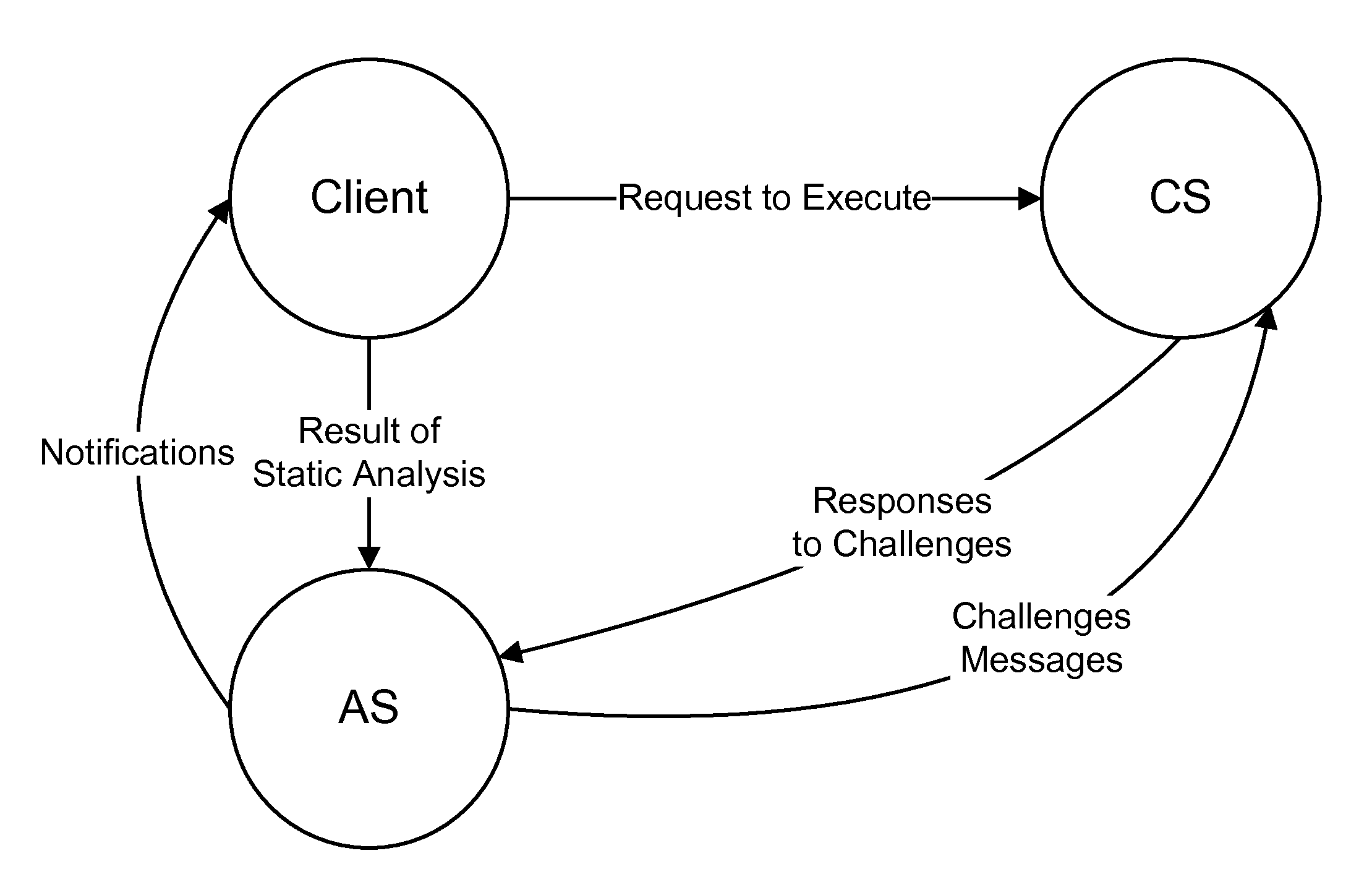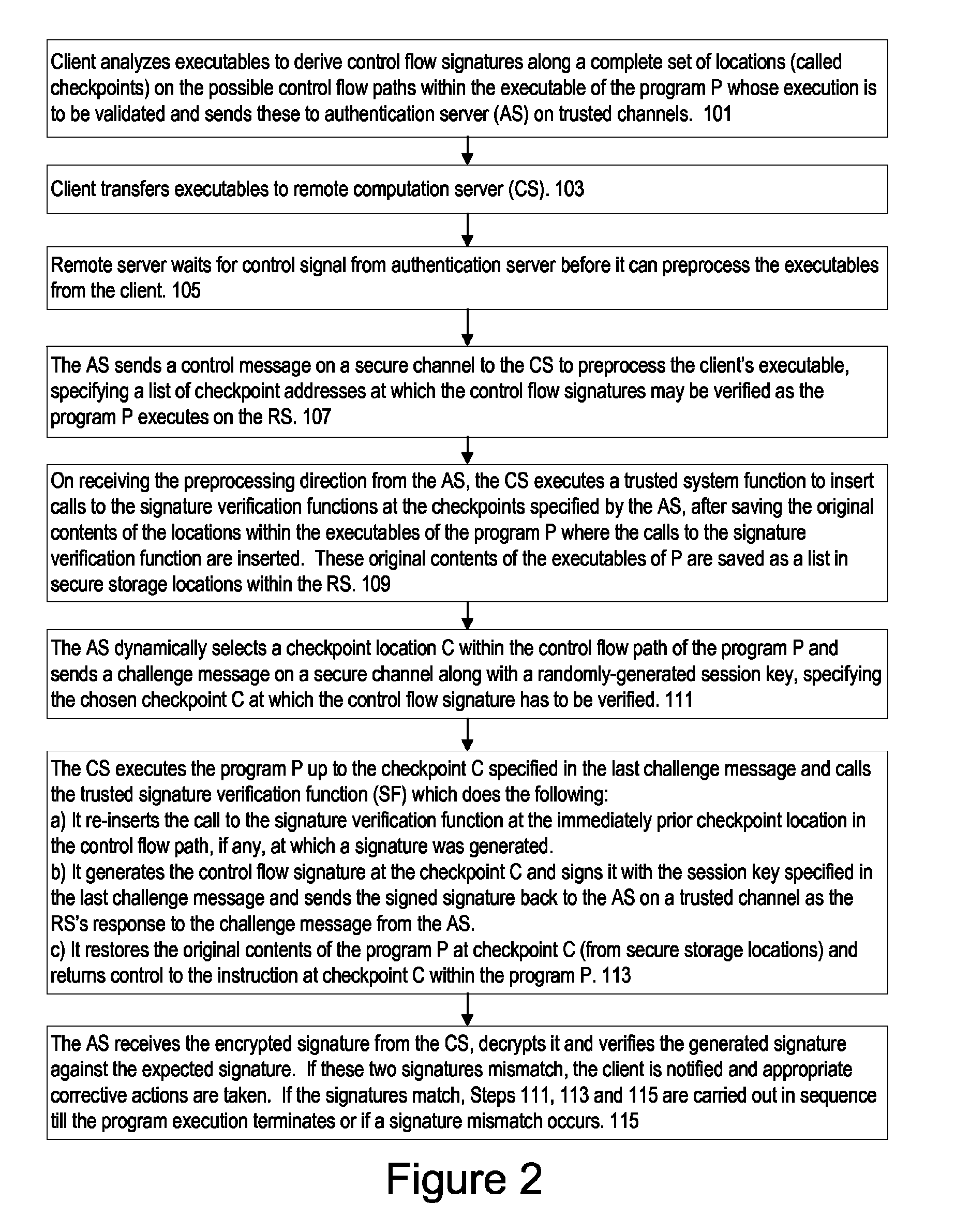System and method for authenticating remote execution
a remote execution and system technology, applied in the field of system and method for authenticating remote execution, can solve the problems of grossly inadequate security mechanisms for authenticating program executions at clients or servers, mechanisms that do not address the vulnerabilities possible at run time, and achieve the effect of reducing the overhead required
- Summary
- Abstract
- Description
- Claims
- Application Information
AI Technical Summary
Benefits of technology
Problems solved by technology
Method used
Image
Examples
Embodiment Construction
3.3. Functional Components of the Framework
3.3.1 The Static Analyzer
[0033]A static analyzer is used on the client side to perform a basic block level data flow analysis of the binaries of the program whose remote execution has to be authenticated. This analysis derives and uses control flow probabilities into basic blocks as is routinely done in many modern optimizing compilers. (A basic block is a set of consecutive instructions that does not have any branch.) The frequently called functions (“call blocks”) are first identified, and then the basic blocks within each such call block are analyzed. A call block is a series of basic block starting from the call instruction and ending with a ret instruction.
[0034]Detecting the dynamically linked functions is easy but deciding the critical local functions that are called frequently is not as easy. To identify the most critical basic blocks; that is blocks with the higher execution frequencies, a jump tree that holds calls and indirect ju...
PUM
 Login to View More
Login to View More Abstract
Description
Claims
Application Information
 Login to View More
Login to View More - R&D
- Intellectual Property
- Life Sciences
- Materials
- Tech Scout
- Unparalleled Data Quality
- Higher Quality Content
- 60% Fewer Hallucinations
Browse by: Latest US Patents, China's latest patents, Technical Efficacy Thesaurus, Application Domain, Technology Topic, Popular Technical Reports.
© 2025 PatSnap. All rights reserved.Legal|Privacy policy|Modern Slavery Act Transparency Statement|Sitemap|About US| Contact US: help@patsnap.com



